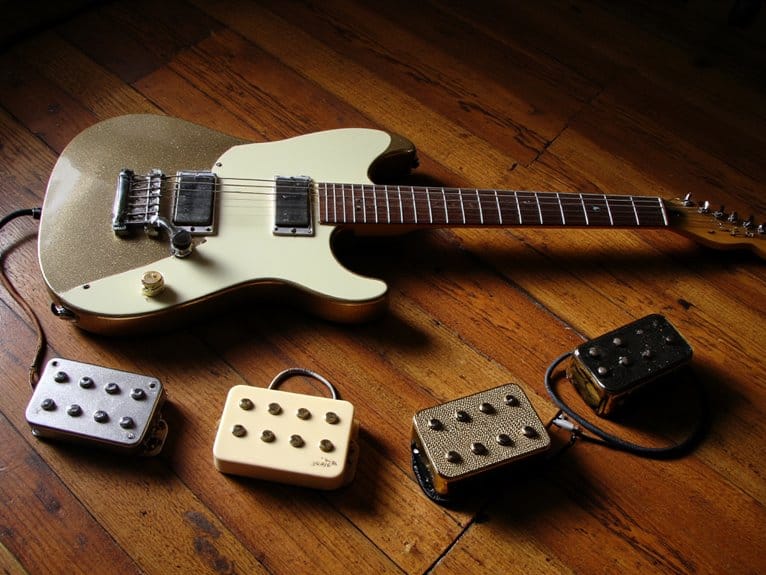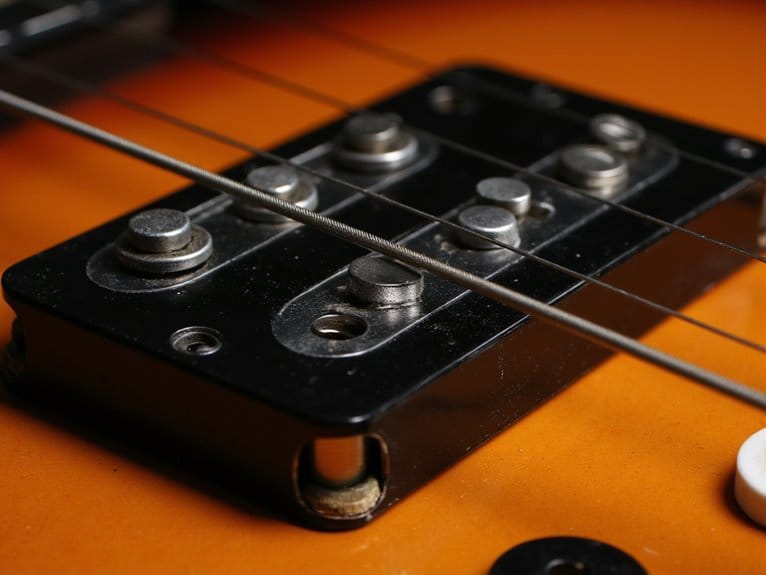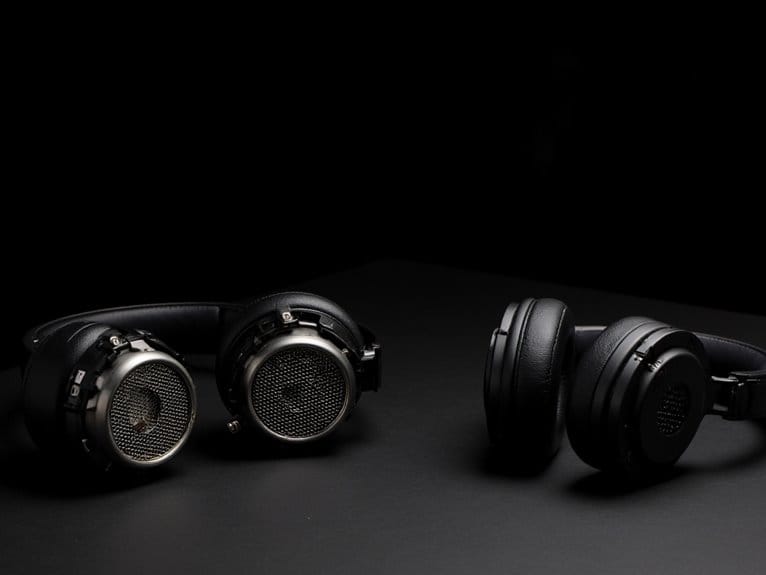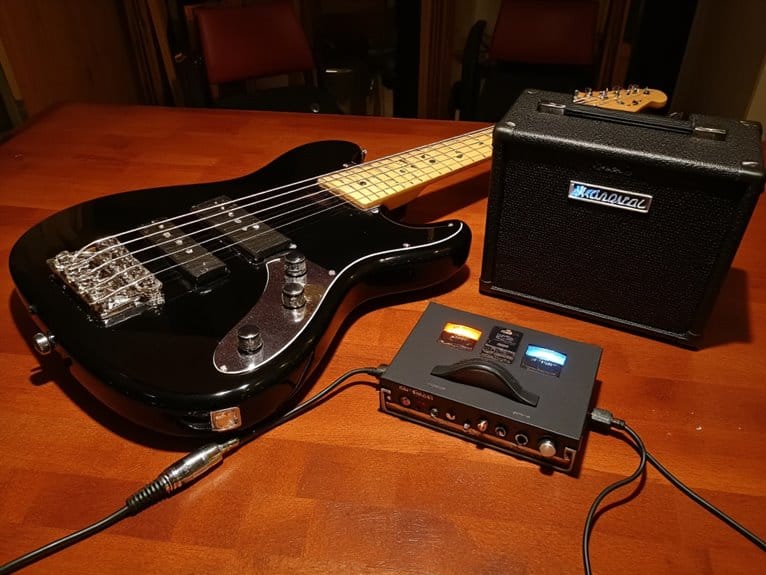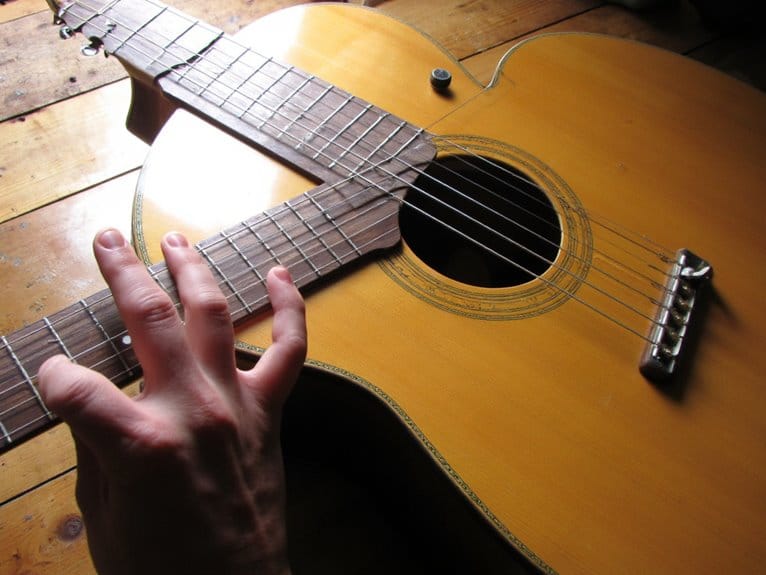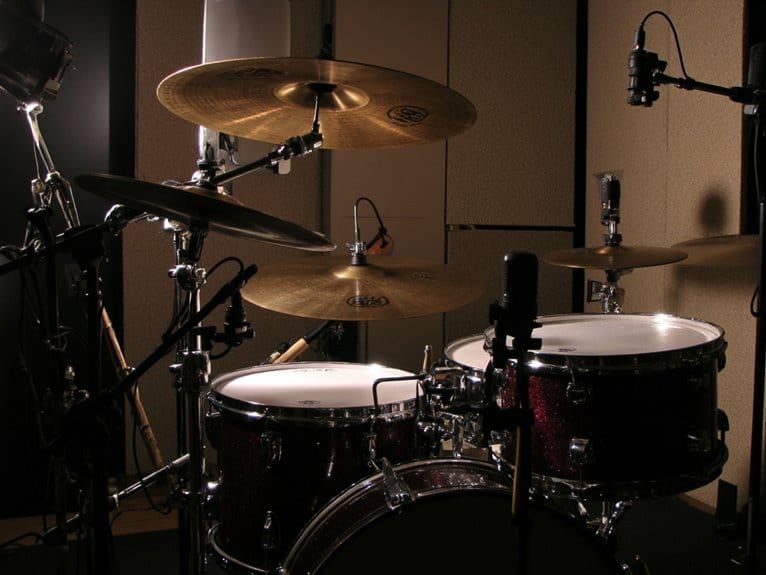How to Choose Pickups for Different Music Styles
When choosing pickups for different music styles, you’ll want single-coils for country and surf genres since they deliver bright, twangy clarity, while humbuckers work best for rock and metal due to their warm thickness and noise cancellation. Jazz players typically favor humbuckers or specialized jazz pickups for smooth articulation, and blues musicians often choose P90s for their distinctive midrange punch and dynamic response. Understanding these fundamental pickup characteristics will help you navigate the technical specifications that truly define your sound.
We are supported by our audience. When you purchase through links on our site, we may earn an affiliate commission, at no extra cost for you. Learn more.
Notable Insights
- Single-coils deliver bright, clear tones ideal for country and surf music, while humbuckers provide warm, thick sounds for rock and metal.
- P90 pickups blend single-coil brightness with humbucker thickness, offering midrange punch perfect for blues and versatile rock applications.
- Jazz music typically favors humbuckers or specialized jazz pickups for their smooth, warm articulation and reduced electromagnetic interference.
- Active pickups provide consistent, low-noise performance with enhanced output, making them reliable choices for heavy metal and high-gain applications.
- Consider pickup position effects: neck pickups emphasize warmth for rhythm playing, while bridge pickups deliver brightness for cutting lead tones.
Understanding Pickup Types and Their Sonic Characteristics
When I first started exploring electric guitars, I’ll admit I was completely overwhelmed by pickup terminology and the endless debates about which type sounds “best” – though I’ve since learned that choosing the right pickup isn’t about finding a universal winner, but rather understanding how each type’s unique sonic characteristics align with your musical goals.
There’s no universal best pickup – only the right pickup that matches your specific musical goals and playing style.
Single-coils deliver bright, clear tones with detailed highs but introduce electromagnetic hum, while humbuckers offer warm, thick sounds with noise cancellation through their dual-coil pickup wiring. Many modern single-coil designs incorporate wax-potted construction to eliminate squealing during overdrive while maintaining their characteristic clarity.
P90s bridge this gap with midrange-focused grit, and active pickups provide consistent, low-noise performance through battery-powered circuitry. Modern innovations like Fishman Fluence pickups combine the organic experience of passive pickups with active features through printed circuit board technology. Filtertron pickups add another dimension with their chimey sound, making them particularly valuable for rockabilly and country applications where brightness and clarity are essential. Lower-output pickups around 6.8k ohms deliver crystalline clarity that’s perfectly suited for clean sounds and surf rock applications.
Understanding these fundamental differences, along with magnet types for tonal enhancements, forms the foundation for making informed pickup decisions that complement your playing style. The choice of magnet material significantly impacts tone character, with Alnico II providing warmth with softer attack while Alnico V delivers greater clarity and higher output.
Matching Pickup Styles to Musical Genres
While pickup selection might seem like a purely technical decision, I’ve discovered that musical genres actually provide excellent roadmaps for narrowing down your choices, since each style has evolved alongside specific tonal characteristics that certain pickup types deliver naturally.
| Genre | Primary Pickup Choice | Tonal Priority |
|---|---|---|
| Rock/Metal | Humbuckers | High output, distortion handling |
| Jazz | Humbuckers/Jazzmaster | Warm, smooth articulation |
| Blues | P90s/Single Coils | Dynamic response, mid-range grit |
| Country/Surf | Single Coils | Bright, twangy clarity |
Genre influences on pickup selection aren’t arbitrary preferences, they’re practical solutions that countless guitarists have tested through decades of performance. When you’re playing heavy metal, humbuckers prevent the muddiness that single coils create under high gain, while country’s signature brightness demands single coils’ articulate bite. Split-coil designs offer another advantage by reducing electrical hum while maintaining tonal clarity across various musical styles. For guitarists seeking even higher output capabilities, active pickups deliver increased gain levels that make them particularly valuable in hard rock and heavy metal applications. The choice of magnet type significantly impacts tonal character, as ceramic magnets provide aggressive bite and clarity while alnico magnets deliver warmer tones with smoother dynamics. Bass players often benefit from PJ pickup configurations that combine precision and jazz bass characteristics for maximum sonic versatility across different musical styles.
Pickup Position Effects on Tone and Performance
Though pickup position might seem like a minor detail compared to pickup type, I’ve learned that where your pickups sit on the guitar body creates some of the most dramatic tonal differences you’ll encounter, since each position captures different portions of your string’s vibrating pattern and fundamentally alters the harmonic content that reaches your amp.
Your neck pickup captures larger string movements near the vibrating center, emphasizing fundamental frequencies that produce warm, round tones perfect for jazz and blues.
The bridge pickup placement catches higher harmonics with less string movement, delivering bright, cutting sounds ideal for rock leads. Similar to how cobalt strings enhance the magnetic relationship with pickups to boost output, the bridge position maximizes the pickup’s ability to capture the string’s harmonic complexity.
Your middle pickup balances both characteristics, offering versatile tonal compromise suitable for various styles. When wired as a reverse-wound pickup, the middle position eliminates hum in positions 2 and 4 while maintaining higher output levels.
Pickup pole piece configuration also plays a crucial role, with staggered designs helping to balance string volume effectively while flush-mounted poles provide more even string response across all positions.
Technical Design Elements That Shape Your Sound
Beyond the fundamental differences in pickup positioning, the internal construction and materials of your pickups create equally significant tonal variations that I’ve found can make or break your sound for specific musical applications.
Understanding these technical elements helps you target specific genres more effectively.
Here are the key design factors that shape your pickup’s character:
- Coil resistance determines output level and brightness, with higher resistance producing warmer, darker tones.
- Magnet materials affect sustain and harmonic content, where Alnico provides vintage warmth while ceramic delivers modern brightness.
- Polepiece configuration influences string balance and magnetic field focus across your fretboard.
- Construction type impacts noise rejection and overall tonal thickness.
These specifications work together, creating the sonic foundation that either complements or conflicts with your chosen musical style. Just as proper string gauge selection affects playability and tone quality for different music styles, your pickup choice must align with your musical preferences and performance requirements. For metal applications specifically, vacuum wax potting becomes essential to eliminate microphonic feedback during high-gain performance and maintain clarity under extreme playing conditions.
P90 pickups offer a unique middle ground between single-coil brightness and humbucker thickness, delivering characteristic midrange punch that makes them particularly versatile across various musical genres.
Selecting Pickups Based on Playing Technique and Style
Consider how your right hand attacks the strings, because I’ve discovered that your picking technique fundamentally changes which pickup position will serve you best in any given musical moment.
Hard picking benefits from bridge pickup‘s pronounced treble and attack definition, while softer fingerstyle playing generally fits neck pickup‘s smoother, rounder response.
I’ve found that quick alternation between pickups can mimic vocal-like phrasing by contrasting bright and dark tonal colors, enhancing pickup versatility across different techniques.
Middle pickup or combined positions offer balanced tones useful for versatile rhythm leads, supporting tonal adaptation through subtle selector switch movements.
Using pickup selector in combination with volume controls allows you to shape timbre without effects changes, making dynamic expression more intuitive.
Frequently Asked Questions
Can I Mix Different Pickup Types on the Same Guitar?
You can absolutely mix different pickup types on the same guitar. Focus on pickup compatibility through proper phase alignment and wiring standards. Tonal blending requires matching impedance values and careful height adjustments for ideal volume balance.
How Much Do Pickup Upgrades Typically Cost?
You’ll spend $70-130 per pickup for standard options, plus $75-100 installation fees. Pickup pricing varies by brand and features, while upgrade benefits include improved tone, reduced noise, and enhanced sustain for your playing style.
Do I Need Professional Installation for Pickup Replacement?
You don’t always need professional installation for pickup replacement. DIY installation works well if you’ve got basic soldering skills and pickup compatibility isn’t complex. However, consider professional help for vintage guitars or intricate wiring systems.
On a final note
You’ve got the foundation now to match pickups with your musical vision, though I’ll admit the sheer number of variables can feel overwhelming at first. Remember that your amp, pedals, and playing dynamics all interact with pickup choice, so don’t expect any single component to transform your sound completely. Start with understanding your genre’s typical requirements, then experiment within those parameters until you find what resonates.

